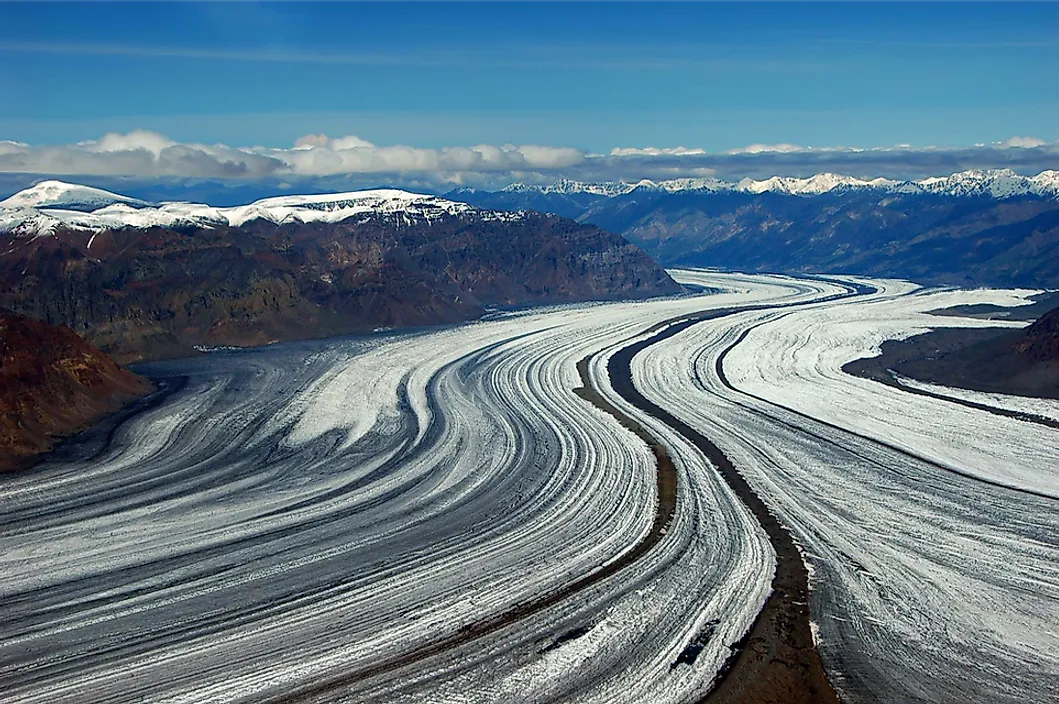Which Is the Largest Glacier in North America?

A glacier is a large mass of compressed snow and ice that is in constant motion because of its immense weight. Glaciers are typically located on mountain tops and can be found throughout the world, and the mountains in North America are no exception to this pattern. This article highlights the largest glacier in North America.
What Is the Largest Glacier in North America?
The largest glacier in North America is the Bering Glacier. Located in Wrangell-St. Elias National Park and Preserve in the US state of Alaska, the glacier is part of the Bagley Icefield, which is recognized as the largest of its kind outside of the polar regions of North America. The snow and low temperatures of the icefield have contributed to the development of the Bering Glacier over time. Together, these two geological features, including the waterways leading in and out of the areas, cover a total area of approximately 1,900 square miles. The Bering Glacier ends at the edge of Vitus Lake, which is located outside the Wrangell-St. Elias National Park and Preserve area. Vitus Lake empties into the Gulf of Alaska by way of the Seal River. Runoff from the glacier is responsible for providing 6.5 trillion tons of water to the gulf each year.
Threats Faced By the Largest Glacier in North America
Like all glaciers around the world, the Bering Glacier is currently threatened by global climate change. Specifically, increasingly warmer temperatures and inconsistent levels of precipitation threaten to continue decreasing the size of the Bering Glacier. In fact, researchers have determined that the glacier has already lost several hundred feet in thickness over the last century. The point at which the glacier ends has also changed over the years, and is now located about 7.5 miles further inland from the edge of Vitus Lake than previously reported. This change indicates a significant amount of glacial retreat, even when taking its surge periods (moments of growth) into account. As Bering Glacier continues to melt, its runoff will cause an increase in the size of Vitus Lake, and researchers believe this increase will eventually lead to the disappearance of the land that separates the lake from the Gulf of Alaska. If this occurs, the glacier will retreat at a much faster rate and will create a large fjord in the area.
Result of Glacier Retreat
Interestingly, researchers believe that the retreat of the Bering Glacier may be responsible for increased seismic activity in the area. Seismic activity, or earthquakes, is caused by the movement of tectonic plates. Generally, tectonic plates are prevented from moving and sliding into and under each other by the extreme weight of glaciers. As the Bering Glacier continues to retreat and thin out, it loses a great deal of its mass. This reduced weight means that the tectonic plates below are free to move with ease, resulting in an increased occurrence of earthquakes. The two tectonic plates most directly affected by the presence of the Bering Glacier are the North American and Pacific plates.











